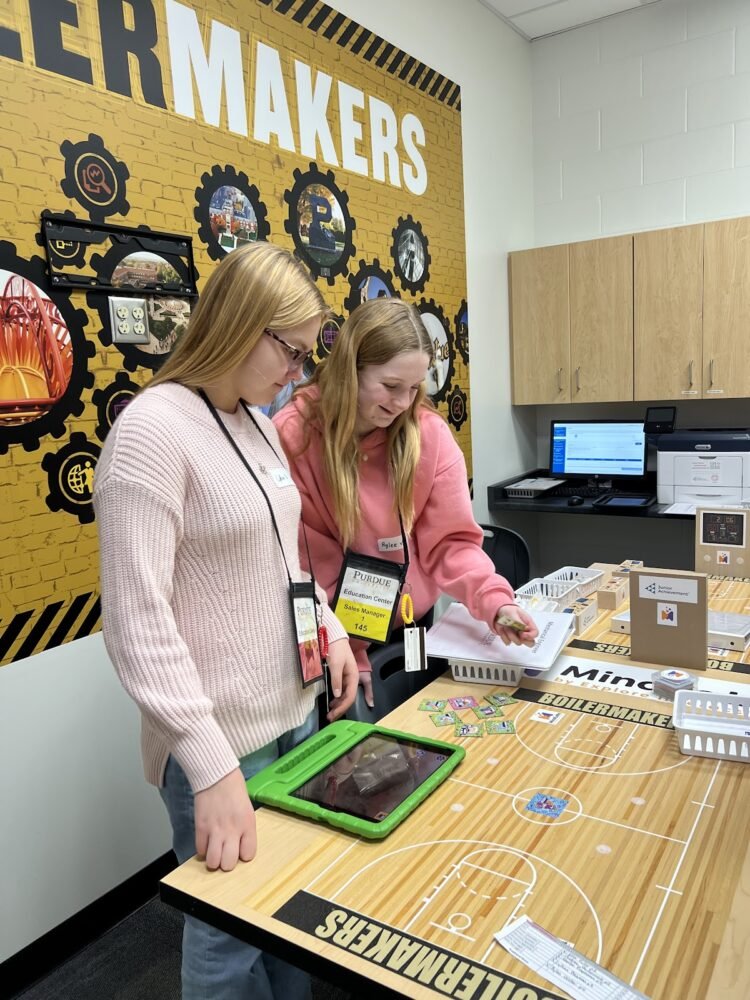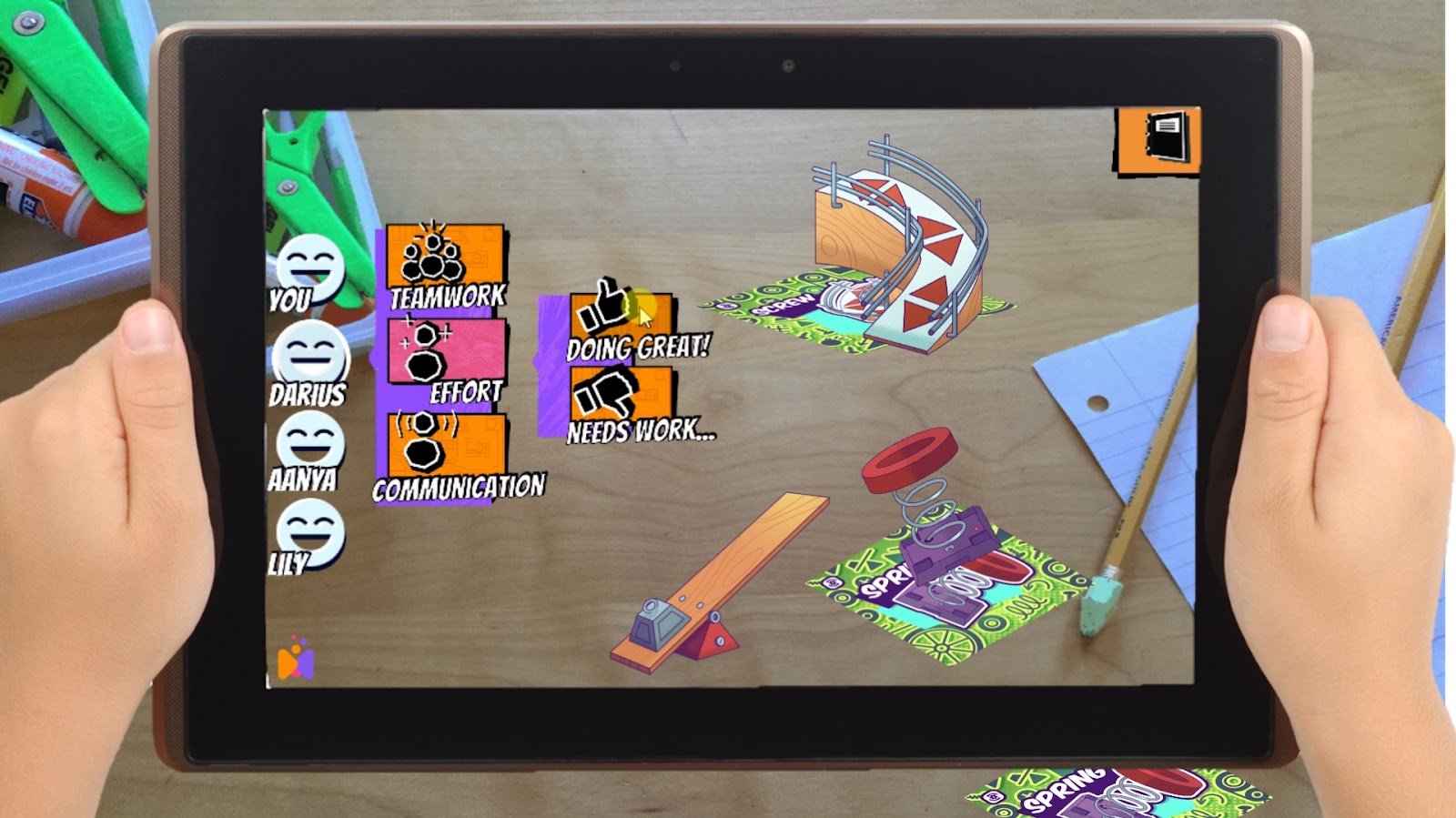As technology rapidly evolves, today’s students must develop the skills and mindset to thrive in an increasingly digital and interconnected world. Augmented reality (AR) is more than a classroom tool—it’s a gateway to future opportunities, empowering students with creativity, problem-solving abilities, and digital fluency that will shape the workforce of tomorrow.

Building Future-Ready Skills
Incorporating AR in the classroom introduces young learners to the same cutting-edge technology shaping industries such as healthcare, engineering, and entertainment. By interacting with AR tools, students develop essential skills like digital literacy, collaboration, and problem solving.
Digital literacy – Students learn about new technologies as they navigate AR apps, which enhances students’ overall comfort with technology. This is a critical skillset for future learning and careers.
Collaboration – AR encourages teamwork as students share ideas and work together to solve problems, communicate with each other across the platform, and build systems in shared virtual spaces.
Creative problem-solving – From designing animals to survive in habitats to experimenting with energy and circuits, AR challenges students to think critically and find solutions in innovative ways.
Bridging Abstract Concepts and Tangible Understanding
AR’s ability to turn abstract ideas into visual, interactive experiences is invaluable in preparing students for careers in STEM and beyond. For instance, by experimenting with 3D models of simple machines through tools like MindLabs, students can manipulate levers, pulleys, and pendulums to see how forces interact.

Encouraging a Growth Mindset
AR fosters curiosity and resilience, teaching students to experiment, learn from failure, and persist in solving challenges.
Demystifying STEM Careers at a Young Age
One of the biggest barriers to STEM careers is the perception that they are “too hard” or “not for me.” Breaking down those walls early can change the trajectory of a student’s future. When students see themselves successfully building systems or solving engineering challenges in AR, they start to envision themselves thriving in these fields.
Teachers play a vital role in fostering this mindset shift. By intentionally connecting classroom activities to real-world careers, educators can help students understand the impact of their learning beyond school.
Here are a few tips for weaving career connections into lessons:
Highlight Real-World Applications – After an AR activity, discuss how the skills students practiced, like troubleshooting circuits or designing structures. Then relate that to actual STEM professions. For instance, explain how electrical engineers design and refine power grids, or how environmental scientists create sustainable solutions for communities.
Invite Guest Speakers – Bring STEM professionals into the classroom, either virtually or in person. These could even be the mom’s or dad’s of your students. Engineers, scientists, or software developers can share their career journeys, talk about the exciting projects they work on, and show students that these fields are filled with creativity and discovery.
Career Spotlights – Dedicate a few minutes each week to spotlight a STEM career. Share videos, articles, or short presentations about different jobs, emphasizing the variety of paths students can take. Relate these careers back to the AR activities students are doing, helping them see the connection between classroom learning and future opportunities.
Project-Based Learning with a Career Twist – Design AR projects around real-world challenges. For example, task students with using AR to design the lights and sound for a stage experience or explore renewable energy systems. Then, discuss the careers involved in making those innovations a reality, from habitat specialists and zoo keepers to civil and renewable energy engineers.
Encourage Reflection and Goal Setting – After students complete an AR experience, ask them to reflect on what skills they used, what challenges they overcame, and what they liked most about the activity. Prompt them to think about which aspects of the project excited them and how those interests could align with future careers.
Early exposure, paired with intentional career connections, build confidence in students and open doors to career pathways. By helping students see the real-world relevance of what they are learning, educators can inspire the next generation of STEM innovators and problem-solvers.
Advancing Equity in STEM and Workforce Development
AR makes high-quality, experiential learning accessible to all students, leveling the playing field for those who may not have access to resources like physical science labs or field trips. AR tools allow teachers to create interactive learning content with minimal cost, ensuring inclusivity.
Empower the Next Generation of Innovators
By embracing AR today, educators have the power to ignite curiosity, build confidence, and shape the innovators of tomorrow. Every AR experience opens a door to future possibilities, showing students that they can be the engineers, scientists, and creators who change the world. Start integrating tools like MindLabs into your lessons, and inspire your students to see themselves as the future of STEM. The next generation of problem-solvers is in your classroom, let’s give them the tools to thrive!
